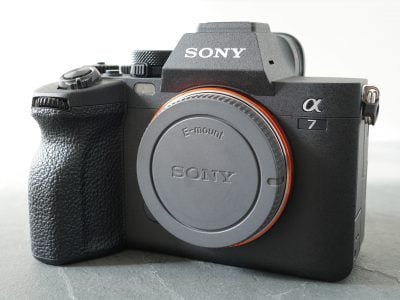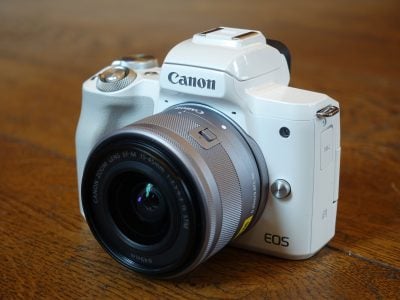Fujifilm X-E1 review
-
-
Written by Ken McMahon
Verdict
The Fujifilm X-E1 is the second of the company’s mirrorless compact system cameras to use the X-mount and the 16 Megapixel X-Trans CMOS sensor debuted in the groundbreaking X-Pro 1. It’s smaller and less expensive than the X-Pro 1 but lacks one of its key selling points – the hybid optical / electronic viewfinder. But in most other respects the X-E1 offers the same, and in some cases a better level of features and functions as the flagship model, making it a great buy for anyone who loved the X-Pro 1, but couldn’t afford it.
Though it lacks the X-Pro 1’s hybrid viewfinder the X-E1’s EVF has a high resolution panel equal to anything else on the market including the Sony NEX-6. And abandoning the optical viefinder means a lighter more compact body as well as a significant saving on the price.
The X-E1 shares the X-Pro1’s excellent image quality and low noise performance, virtually identical physical control layout, the same shooting modes, continuous shooting performance and movie modes and improved AF performance. It may miss out on the PC Sync socket of the X-Pro1, but unlike that model offers a built-in flash unit and a socket for an external mic that can also be used with wireless remotes and interval timers. Finally, the X-E1 can be bought with a new 18-55mm kit zoom with a bright f2.8-4 maximum aperture and image stabilisation. The cost of the X-E1 with the kit lens is roughly the same as the body-only price for the X-Pro 1.
 |
Compared to Canon EOS M
The Canon EOS M and Fujifilm X-E1 are two very different mirrorless compact system cameras that share some important common ground. But even the things they have in common turn out be radically different when you get beyond the superficial. Both have at their core an APS-C CMOS sensor with fairly similar resolutions – 18 Megapixels for the EOS M and 16 for the X-E1. But the X-trans sensor technology employed in the X-E1 is radically different from that in the EOS M and most other digital cameras. Is this important? Yes it is, for a couple of reasons. Firstly the X-E1 outperformed the EOS M pretty comprehensively in my low ISO noise tests. But a new sensor type can be difficult for third party software vendors to support, which is also something to bear in mind.
And there’s another difference in the sensors, but this time it’s Canon’s turn to be innovative. The EOS M uses the same sensor as the EOS T4i / 650D DSLR with on-sensor phase detect AF points, backed up by contrast detect AF for fine tuning. Paradoxically, this doesn’t provide the EOS M with any advantages where normal photo AF is concerned – it’s actually slower than the X-E1, but it does manage better continuous AF performance when shooting movies.
While we’re on the subject, the EOS M is a better all-round movie camera than the X-E1 where video seems to have been something of an afterthought. Canon has long experience of providing first rate movie features in its DSLRs and that has found its way into the EOS M which offers more video modes and full manual control not to mention a dedicated movie record button and the ability to shoot movies with effects.
Beyond the sensor, Canon and Fujifilm are relative newcomers to the mirrorless compact system camera market and while neither has the kind of lens selection on offer from the Micro Four Thirds system, Fujifilm currently has five lenses available for its X Mount and Canon has two EF-M mount lenses – the 18-55mm f3.5-5.6 zoom and 22mm f2 pancake prime. Crucially though, with the EF-EOS M adapter you can mount any EF or EF-S lens on the EOS M and still have full use of AF and all exposure modes. Neither offers built-in image stabilisation but both offer an 18-55mm stabilised zoom.
Beyond all of these feature comparisons and specifications, these two models provide very different handling characteristics. That’s mostly down to differences in size and design philosophy, the X-E1 has retro styling and lots of physical controls and the EOS M is compact and is mostly operated via its 3 inch touch-screen. This is also the only way to compose shots as the EOS M lacks a viewfinder of any description or even an add-on accessory.
There are other differences, the XE-1 has a built in flash compared with an accessory for the EOS M and also offers slightly faster continuous shooting. In its favour the EOS M provides a wider range of shooting modes with more novice-friendlly features like intelligent Auto exposure and face detection. But to be honest, these differences are only of secondary importance. It’s the design philosophy that really sets these two models apart and you probably already have a good idea, just by looking at them, which camp you fall into.
See my Canon EOS M review for more details.
Fujifilm X-E1 final verdict
The X-E1 is a great follow up model to Fujifilm’s X-Pro 1 providing most of what the more expensive flagship model offers at a significantly lower price point. For purists, an optical viewfinder on a rangefinder style camera will be a must-have feature and the X-Pro 1’s hybrid viewfinder is a technological wonder. But if you can live without an optical viewfinder, the X-E1’s EVF is one of the best around and is arguably better suited to an interchangeable lens camera.
In virtually every other respect the X-E1 has as much, if not more to offer. If you like the idea of old school physical control over exposure augmented by well designed and functional digital tools the X-E1 won’t disappoint. In the same way that Olympus has re-stoked enthusiasm for traditional SLR design with the OM-D E-M5, with this latest X Series model Fujifilm stands poised to do the same thing for the classic rangefinder. It’s a beautifully designed and engineered camera that’s a pleasure to use, well deserving of Cameralabs’ Highly Recommended Award.
Bad points | Scores (relative to 2013 system cameras) |
 | ||
Build quality: Image quality: Handling: Specification: Value:
Overall: |
18 / 20 18 / 20 17 / 20 16 / 20 16 / 20
85% | |||





